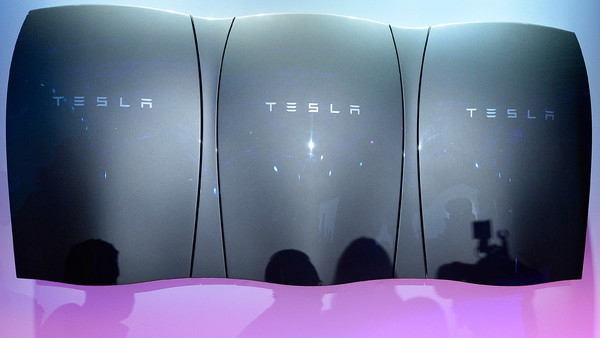November 17, 2015 9:00 pm
The cost of batteries is falling to the point that they are becoming an increasingly viable option for uses such as supporting the stability of power grids, according to Lazard, the investment bank.
Electricity storage has until recently been prohibitively expensive, but its emergence at an economically viable cost will enable increased use of wind and solar power, which are not always available.High quality global journalism requires investment. Please share this article with others using the link below, do not cut & paste the article. See our Ts&Cs and Copyright Policy for more detail.
The cost of renewable energy has fallen sharply over the past decade as market growth, usually encouraged by subsidies, has enabled manufacturers of wind turbines and solar panels to benefit from economies of scale.
Similar trends are now at work in electricity storage with investments such as Tesla’s battery “gigafactory”, now under construction in Nevada, greatly increasing manufacturing capacity.
Within five years, Lazard believes, the price of batteries is likely to have fallen to the point that they will be competitive against back-up fossil fuel power generation for a wide range of uses.
“Storage is looking far more optimistic in terms of innovation and material impact now,” said George Bilicic, global leader of Lazard’s power, energy and infrastructure practice.
“Power grid applications were grade school science projects a few years ago. They are much more real now.”
The need for electricity storage has grown along with the use of renewable energy. Onshore wind and solar power in sunny areas are now competitive with conventional coal and gas-fired electricity generation even without subsidies, according to Lazard.
However, because their output is not consistent through the day, and cannot be called on whenever needed, they have to be supported by other power sources. These are typically gas-fired “peaker” plants, which cost more to run than the most efficient generation and are used only when demand is highest.
Batteries are still typically more expensive than peaker plants for uses such as supporting the grid at times of strain or backing up renewable energy, but Lazard expects that in five years’ time they will be generally competitive options even without any subsidies or tax breaks.
New electricity storage installed on to the grid to support wind and solar power is likely to grow more than 60-fold from 196 megawatts of capacity this year to 12,700MW in 2025, according to Navigant, a research firm.
Sunshine revolution: the age of solar power

From the US to China, solar power is poised to tackle climate change and shake up the electricity industry
Jim Robo, the chief executive of NextEra Energy, told a conference in September he expected that after 2020, “there may never be another peaker built in the United States”, because electricity storage would be used instead.
NextEra, which owns Florida Power & Light, a utility, is one of many US and international companies investing in storage. AES, the Virginia-based power company, is for example providing 100MW of battery storage capacity for Southern California Edison, another utility.
The PJM electricity grid, which stretches from Tennessee to New Jersey, has become a centre for investment in storage because its market design rewards sources that can be brought on quickly to support the infrastructure.
Widespread use of energy storage was not essential for increased reliance on renewables, said Mr Bilicic. A “blended” mix of solar, wind and gas-fired power, with improved energy efficiency, could be competitive with conventional coal plants, he added.
Anissa Dehamna of Navigant said the best long-term option to back up variable renewable energy might be flexible combined-cycle gas turbine plants.
General Electric and Siemens have brought on to the market new turbines that can ramp output up and down faster and with higher efficiency than previous models.
However, electricity storage will make it easier to increase the contribution made by renewables, Lazard believes, and can generally be deployed faster than new gas-fired power plants.

沒有留言:
張貼留言